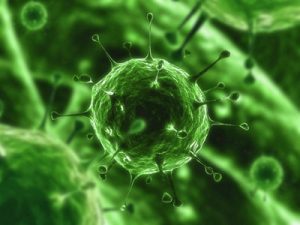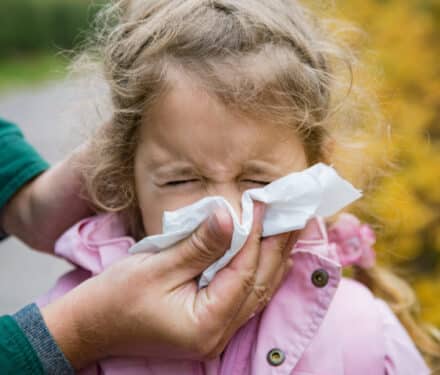Why has the 2017 flu season been so bad?
There have been more than 2.5 times the number of laboratory confirmed cases of flu (160,000) in Australia compared with the same period last year.

The effects of a bumper flu season are still being felt well into spring, with moderate levels of flu activity expected to linger into October.
Around 800 people die from the flu in Victoria each year. Why do some people have a more severe reaction than others to influenza infection? And what can people do to protect themselves?
Dr Michelle Tate, an expert in severe influenza infection, sheds light on why 2017 has been a particularly severe flu season in Australia.
What is your lab, and science, doing to help?
Severe influenza infections are often associated with an overwhelming reaction by our immune systems to infection, resulting in a ‘cytokine storm’, where there is so much inflammation that it damages tissues and organs.
Often, inflammation is needed to help our body to fight off infection. However, in severe influenza infections, inflammation can cause the body to ‘burn up’ and may result in multi-organ failure or respiratory failure leading to death.
In fact, it is often the immune system’s overzealous reaction to influenza infection that results in death, rather than the direct effects of the virus itself.
Patients often present to hospital five to seven days after the onset of flu symptoms. At that stage of infection, current anti-viral drugs, such as Tamiflu (which is often given to those at risk of contracting the flu, such as hospital workers) are largely ineffective. So there is a gap here for scientists to develop new therapies and drugs which dampen the immune system in patients who present with severe flu – our work is on closing that gap to reduce deaths associated with severe flu infection.
We have identified a protein in the immune system called the inflammasome which promotes inflammation or ‘cytokine storm’ in severe influenza. We believe that we could develop new drugs that limit damaging inflammation, by targeting the pathway involving the inflammasome.
The more we can understand this pathway, the closer we will get to developing new therapies to prevent those deaths associated with severe flu infection.

Why has 2017 been a worse than normal flu season?
The predictions as to what the annual flu vaccine should contain or protect against are made months ahead of the flu season, allowing time for the vaccine to be manufactured before the season starts. As a result, any vaccine is never going to be 100 per cent effective in protecting against the flu, and this year, protection rates are significantly lower than other years because the vaccine wasn’t as effective in protecting against the main strain of the H3N2 flu virus which dominated this year.
The World Health Organisation (WHO) has recommended that the 2018 flu vaccine in the Southern Hemisphere contain protection against a different strain of H3N2 (the strain that predominated this year) to better protect the population from the flu.
Is it worth getting vaccinated against the flu?
Yes. The vaccine targets three of the most common types of the flu – type A H1N1 and H3N2, as well as a type B. Vaccination against the flu is particularly recommended for people with underlying conditions such as asthma, pregnant women, the elderly and health workers.
The 2017 flu season a once-off? What we can expect in the future?
Given that the influenza virus constantly mutates and that the vaccine needs to be made in advance of the season, there is always a possibility that this year was not a once-off.
In addition to the threat of current strains of the flu which circulate in humans, there is always a possibility that a completely new severe strain of the flu could emerge. For example, a virus that is currently only transmitted by animals to other animals such as birds, could ‘crossover’ and become transmissible between humans.
If that happens, our bodies are unlikely to have natural immunity and an existing vaccine would be largely ineffective. The 1918 ‘Spanish Influenza’ pandemic killed an estimated 20- 40 million people at the end of the First World War. It is thought that the pandemic resulted after a flu virus jumped from birds to humans.
Since 2013 in China, a strain of avian (bird) influenza viruses known as H7N9 have caused 1564 reported human infections and 610 people have died (mortality rate of 39 per cent). This virus is mostly transmitted to humans from birds in live animal markets. However, it currently cannot be transmitted from human to human – but there is a potential for the virus to adapt and acquire the ability to be transmissible from human to human.
Contact us
Hudson Institute communications
t: + 61 3 8572 2697
e: communications@hudson.org.au



